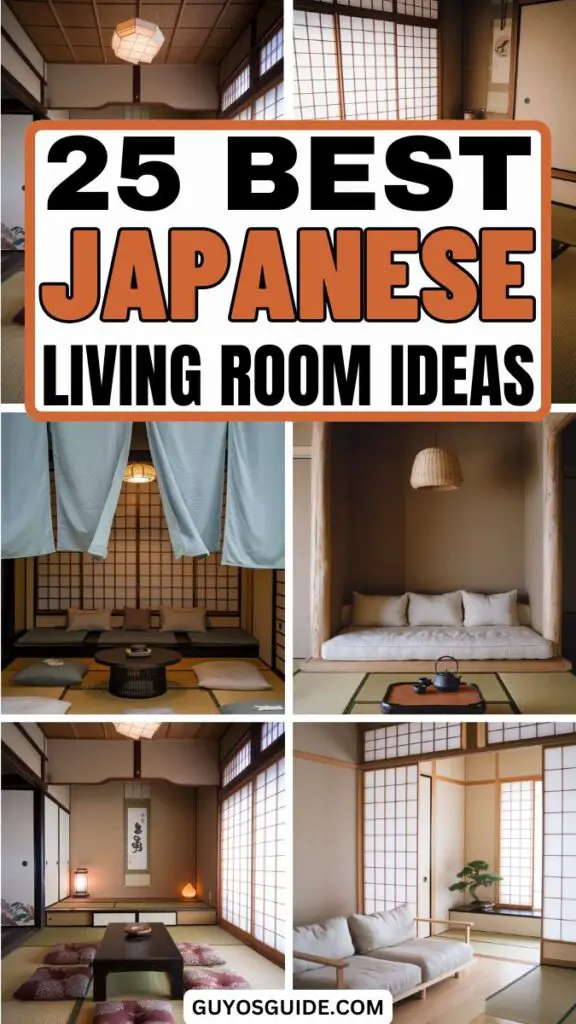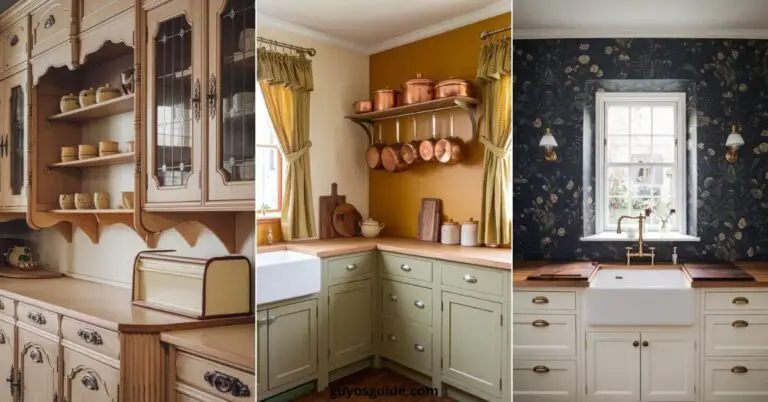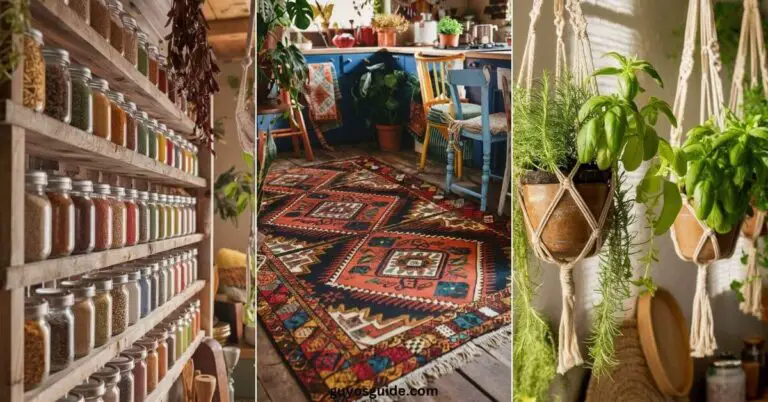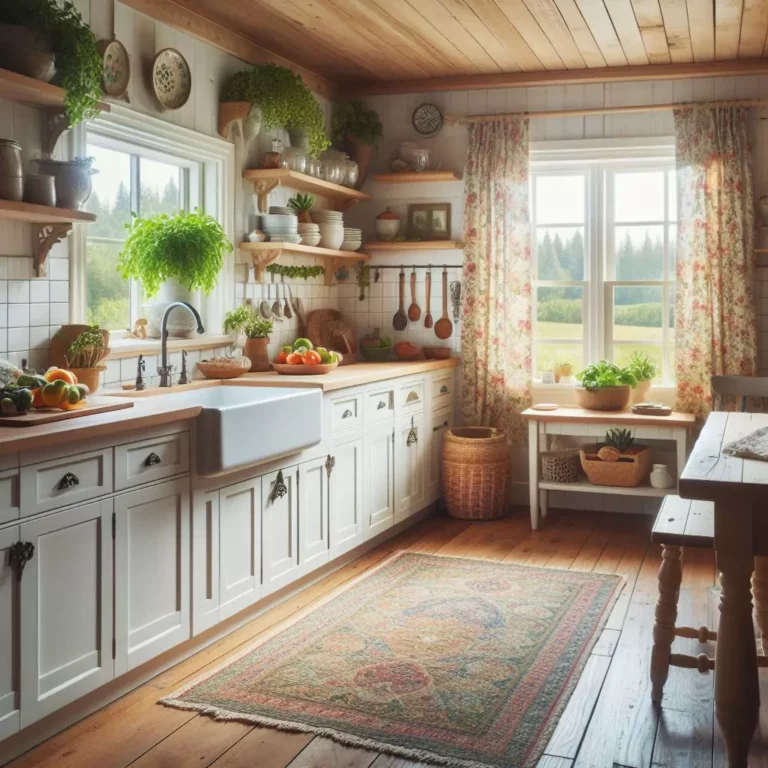25 Japanese Living Room Ideas That Feel Calm and Cozy
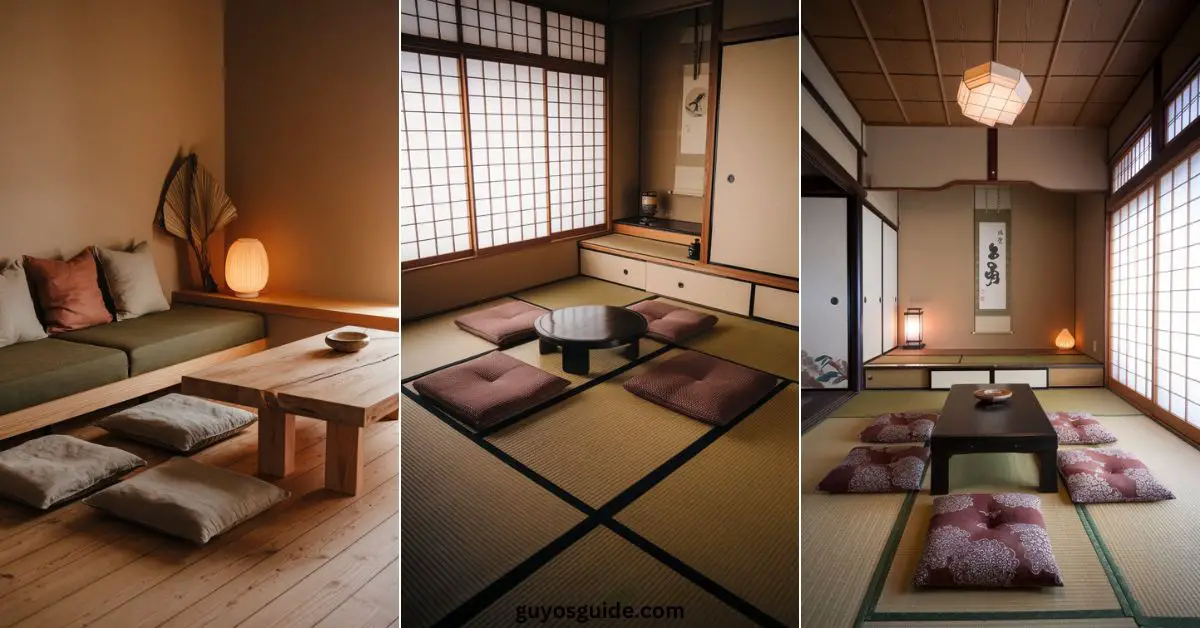
Have you ever seen a Japanese living room?
It’s calm, simple, and really pretty.
In this article, we’ll show you how Japanese people decorate their living rooms with style and peace in mind.
You might even want to try it at home.
Let’s get started!
1. Embrace Minimalism With Intention
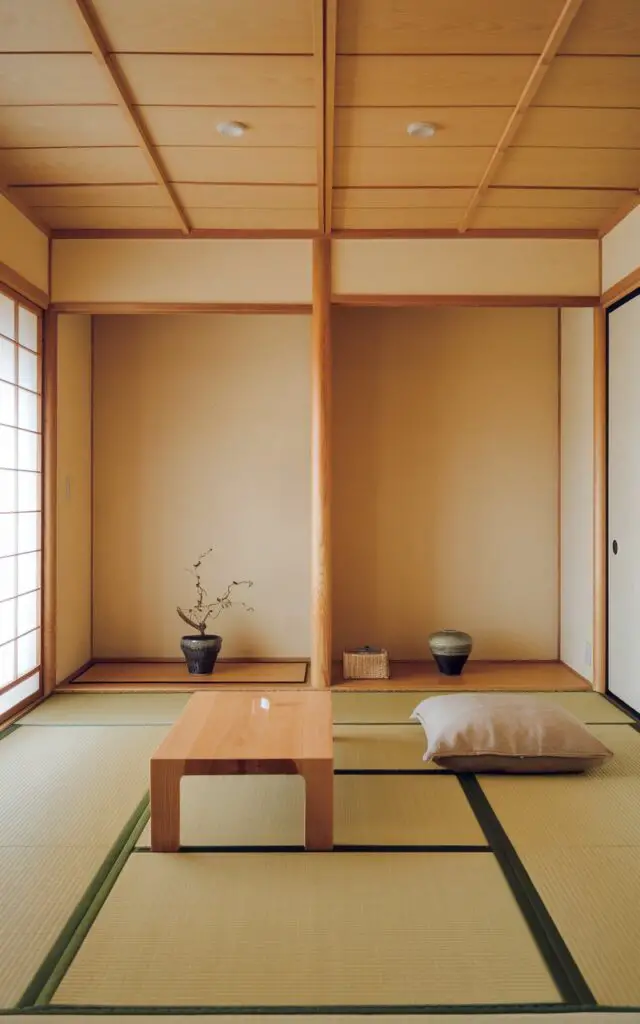
Japanese design thrives on simplicity—but not the sterile kind.
Think curated minimalism: a low sofa, a clean-lined table, and just a few beloved objects.
Every piece should serve a purpose or spark joy. Let the space breathe.
When you walk in, it should feel like a deep exhale.
2. Bring in a Chabudai Table
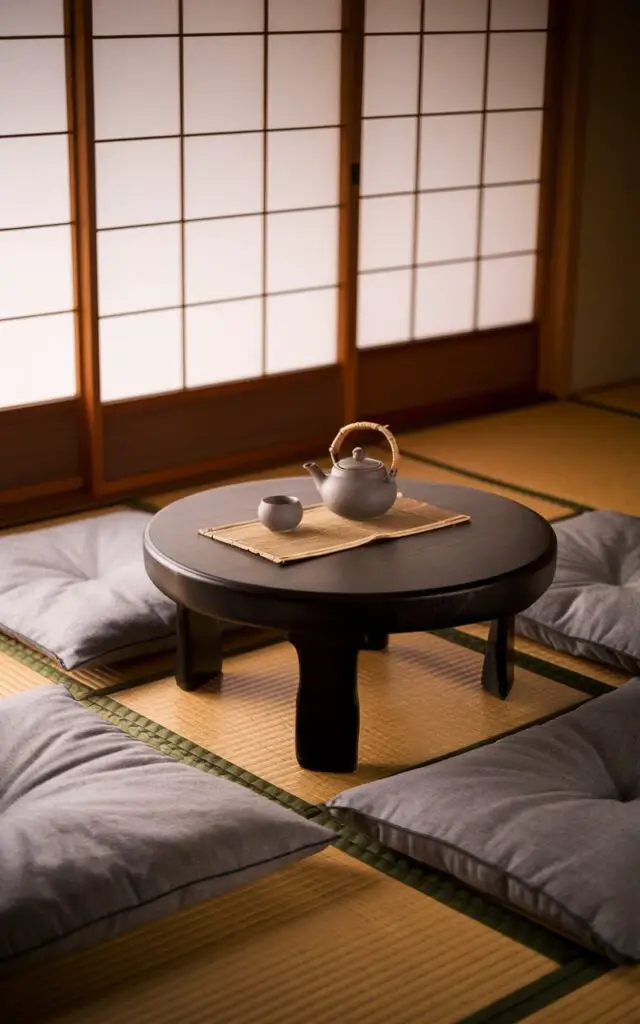
Swap your coffee table for a chabudai—a short, traditional table that invites you to sit low to the ground.
Add some floor cushions and voilà, you’ve created an intimate gathering space.
Bonus points for sipping green tea while pretending you’re in a quiet Kyoto townhouse.
3. Soften Spaces With Shoji Screens
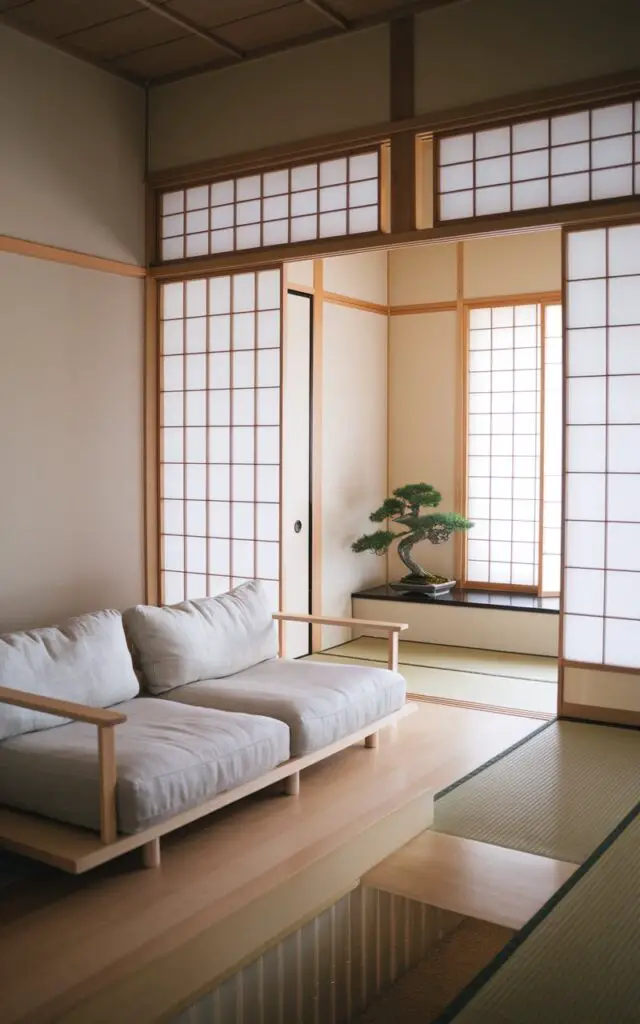
Shoji screens are magical—seriously. These paper-paneled dividers create structure without shutting out light or warmth.
Use them to section off a reading nook or disguise cluttered corners.
They’re the perfect blend of functional and ethereal, like a whisper separating one moment from the next.
4. Highlight Warm Natural Wood

There’s something grounding about Japanese interiors, and a lot of that comes from the wood.
From soft cypress to warm-toned cedar, natural wood anchors a room without overwhelming it.
Use it for floors, shelves, or beams to instantly make the space feel earthy and balanced.
5. Lay Down Tatami Mats

Nothing says “authentic Japanese living” quite like tatami.
These straw mats bring texture, subtle scent, and tradition into your space. Use one to define a quiet zone for reading or meditating.
It’s like rolling out calm energy—literally. Your feet will thank you.
6. Let the Light Flow In
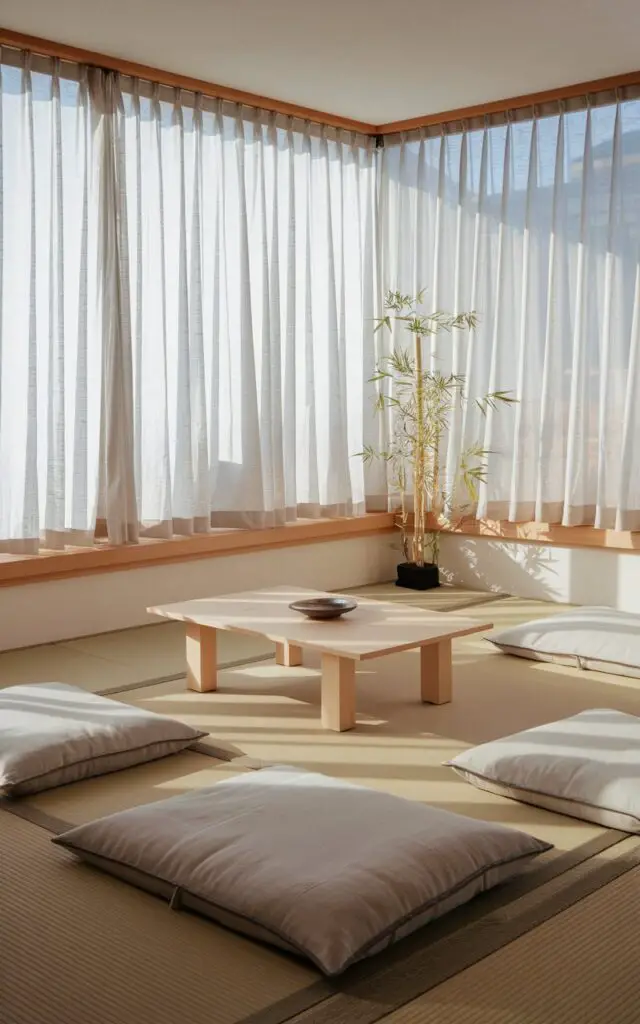
Harsh lighting? Not here.
Japanese design welcomes soft, natural light that shifts through the day.
Think sheer curtains, paper shades, and bare windows when privacy allows.
Light should drift in like a gentle breeze—calming, never jarring. It’s about mood, not wattage.
7. Make Space for a Zen Corner
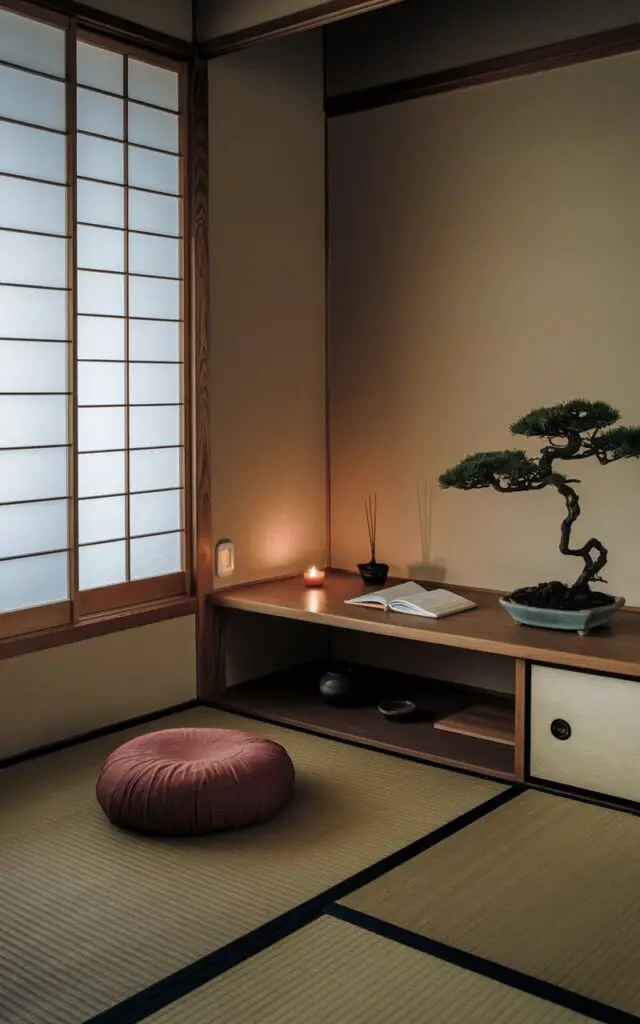
Every home deserves a pause button.
Carve out a Zen corner with a small floor cushion, a low shelf for incense or a stone garden, and maybe a peaceful sculpture.
It doesn’t need to be big. Just enough to say, “Breathe. You’re here.”
8. Stick to Earthy, Muted Tones
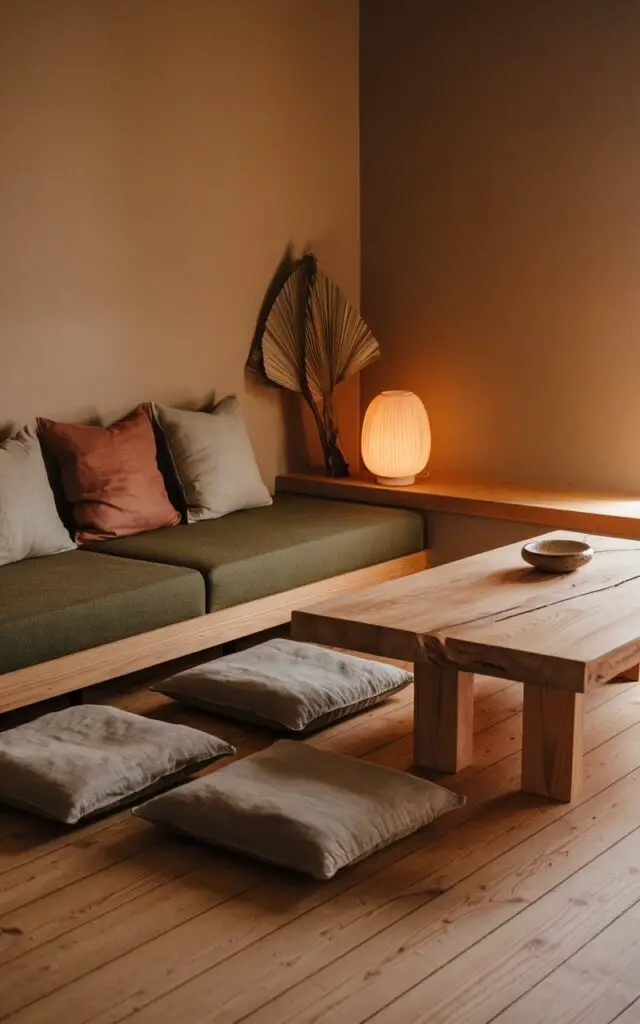
Japanese interiors whisper, they don’t shout. Think warm grays, soft browns, sage greens, and creamy whites.
These hues mimic nature—rock, sand, sky. Avoid high-contrast palettes; this is about flow and harmony.
Your living room should feel like a gentle walk through the woods.
9. Practice Ikebana Flower Arranging
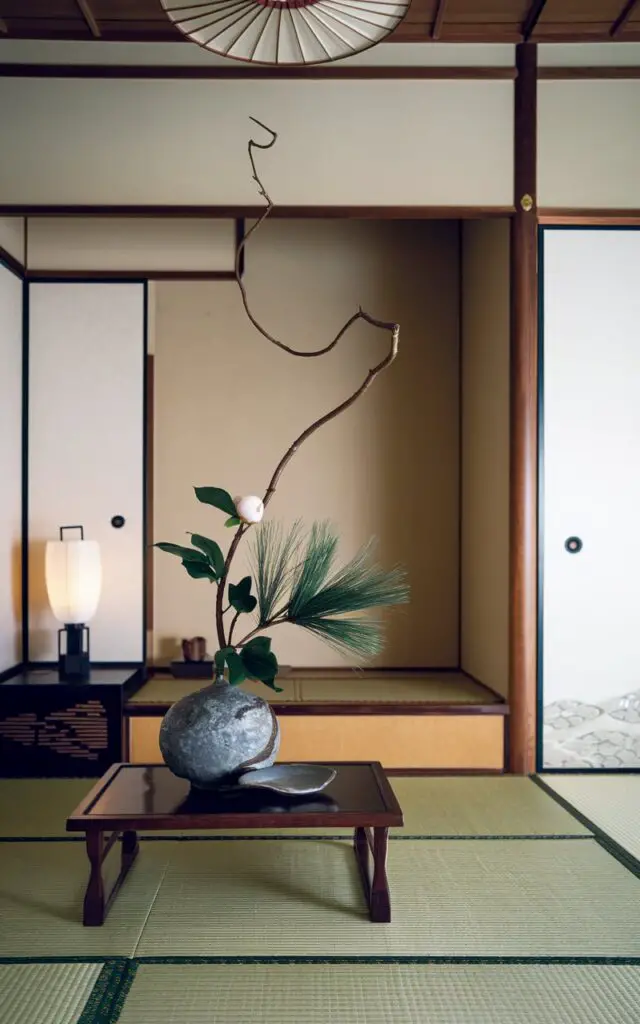
Ikebana isn’t your average bouquet. It’s part art, part meditation.
A single branch, a curve of leaf, maybe one bloom—arranged just right.
Place your creation on a shelf or table for an ever-changing moment of beauty. It’s a reminder that less can be breathtaking.
10. Sit Low to the Ground
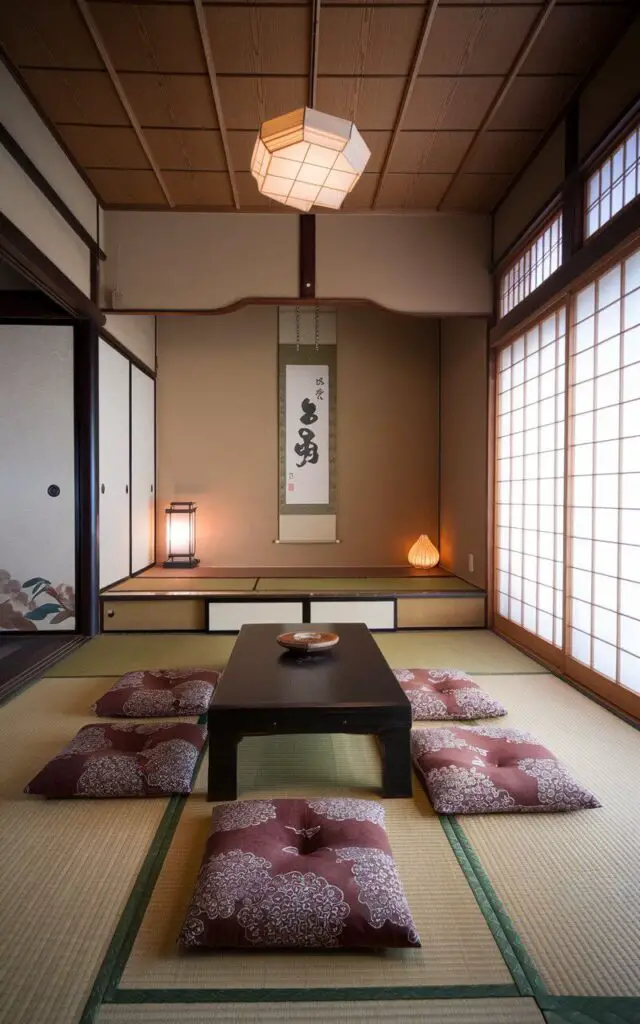
There’s a quiet power in low seating.
Whether it’s a zaisu chair or a floor cushion, grounding yourself physically has a way of calming the mind, too.
It encourages slow conversations, quiet meals, and a reconnection with your space—without all the bells and sofas.
11. Create a Tokonoma Display Niche
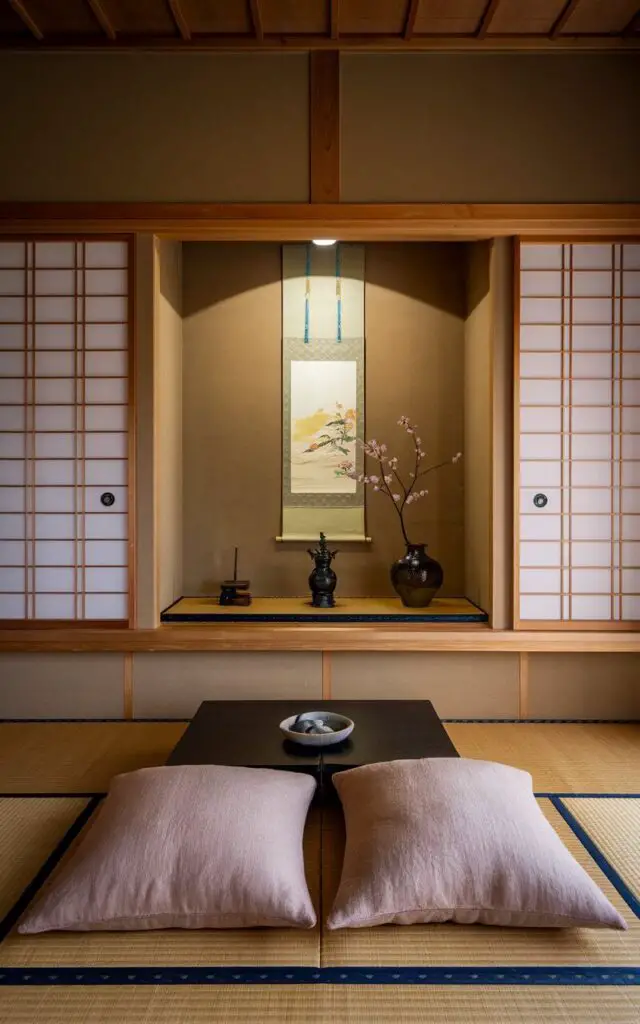
A tokonoma is more than décor—it’s a ritual space.
Traditionally used to display art or floral arrangements, you can create your own by dedicating a small wall or corner for seasonal pieces or personal treasures.
Keep it sparse. Let each object tell its story.
12. Add Texture With Clay or Plaster Walls
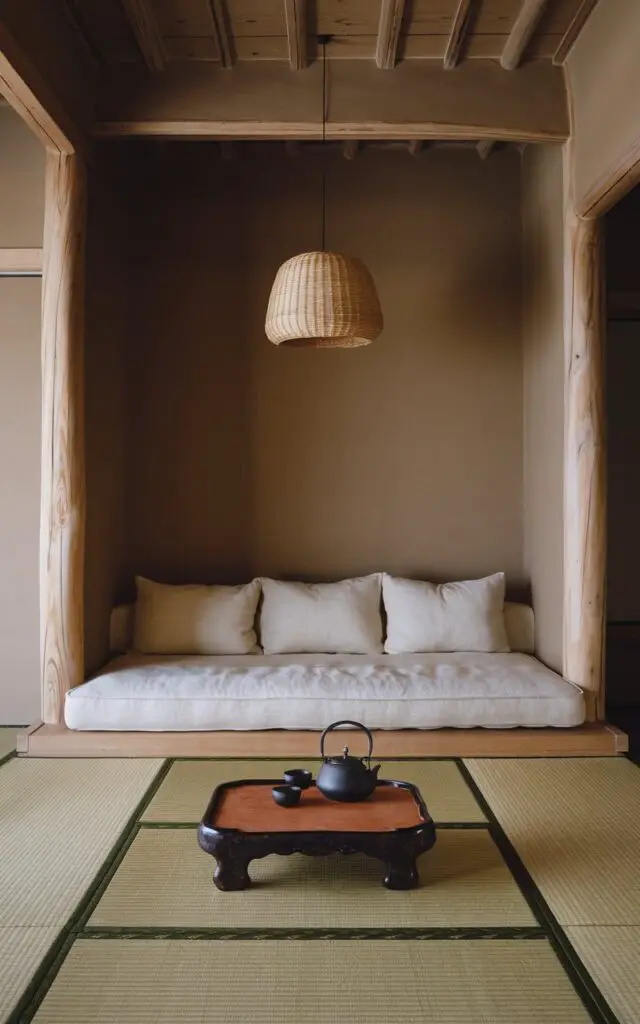
Forget glossy finishes—embrace the tactile beauty of clay or hand-troweled plaster walls.
They catch light differently, change with the time of day, and add depth you can feel.
It’s like your walls have a soul—and maybe a little poetry baked right in.
13. Pull the Outdoors In
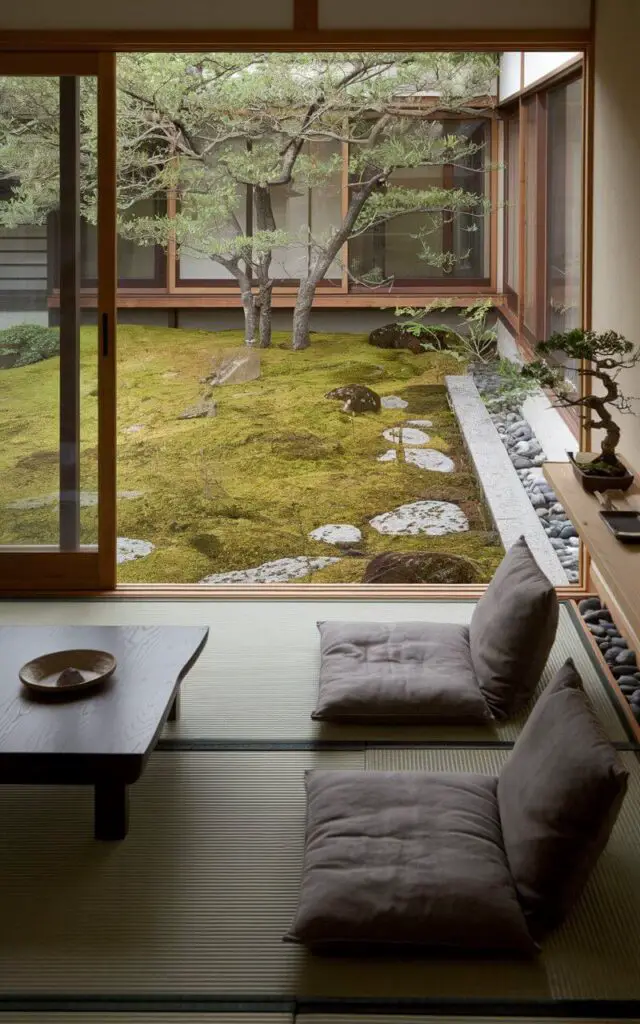
Nature isn’t just outside the window.
Bring it in with bamboo, bonsai, or even just a bowl of river stones. Japanese design blurs the line between inside and out.
Your living room becomes a quiet extension of the earth, not an escape from it.
14. Hang a Noren Fabric Divider

Noren aren’t just for old noodle shops.
These fabric dividers can add softness, movement, and a pop of color to doorways or open archways.
They’re casual yet cultural, flowing gently as you pass through—a perfect fusion of function and flair.
15. Showcase Wabi-Sabi Pottery
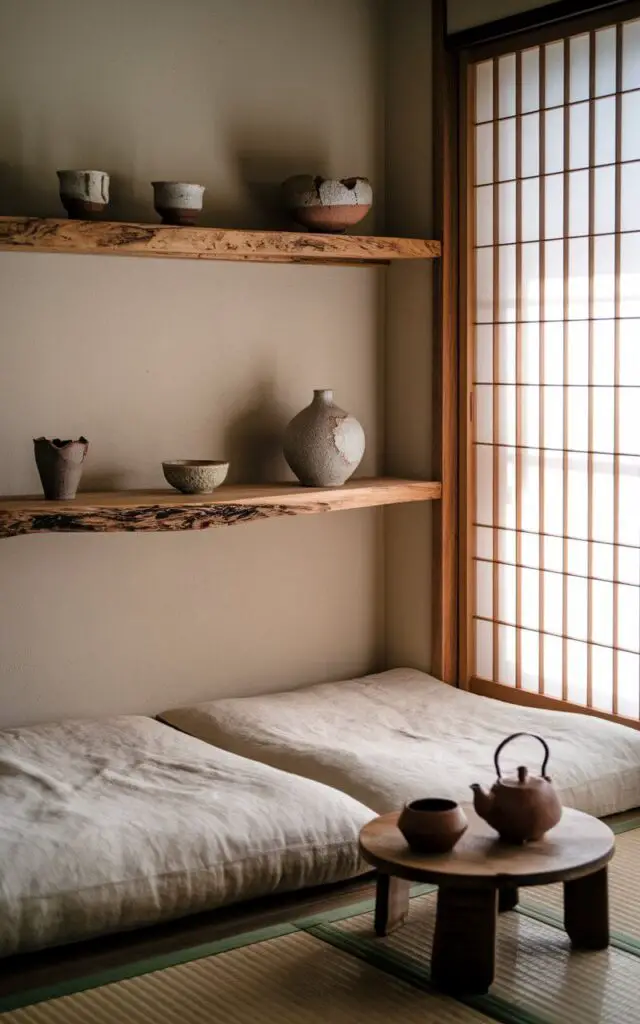
Wabi-sabi is all about beauty in imperfection, and handmade pottery is its poster child.
Whether it’s a cup with an uneven rim or a vase with a crackled glaze, these pieces carry personality.
Place them proudly. They make your living room feel lived-in and loved.
16. Keep the Ceiling Beams Exposed
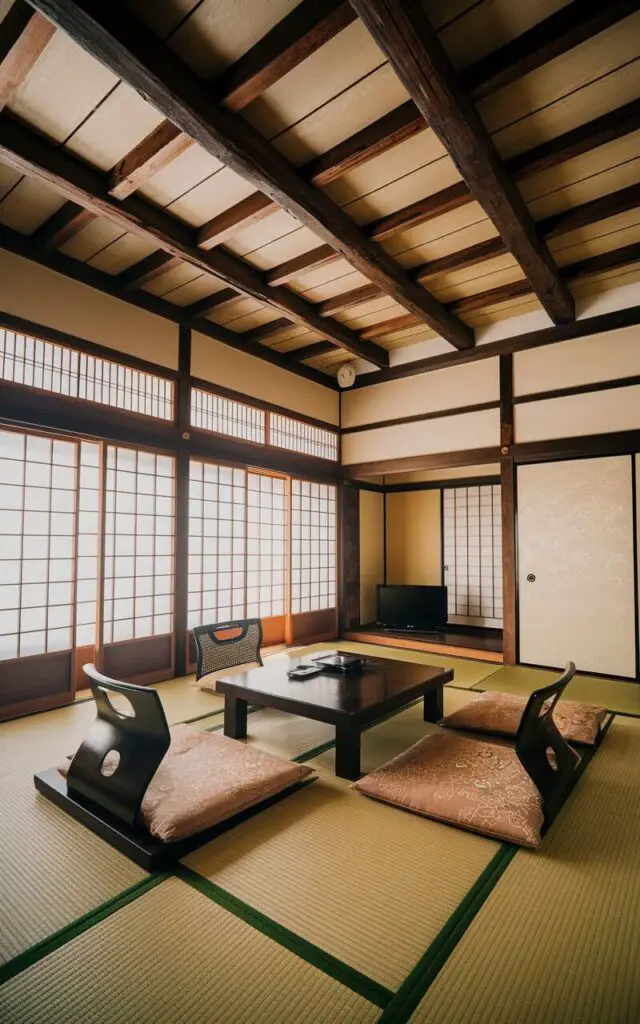
If you have them, flaunt them!
Exposed wooden beams bring rustic charm and an organic element to any room.
In Japanese interiors, they add a sense of groundedness and tradition.
Whether they’re natural wood or painted in a subtle hue, they draw the eye upwards and bring architectural beauty to your space.
17. Add Washi Paper Touches
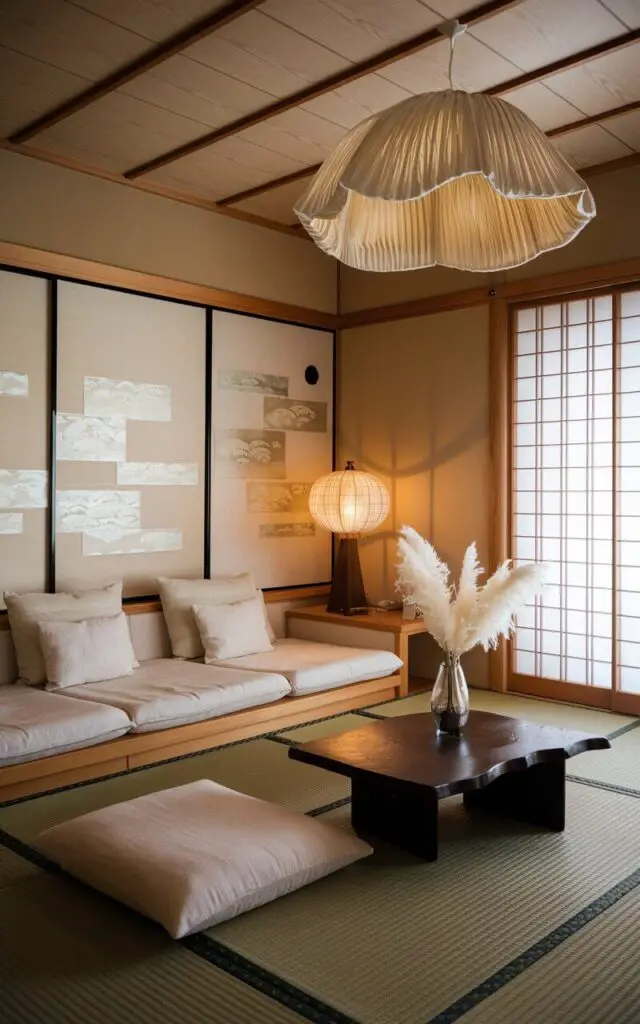
Washi paper isn’t just for calligraphy.
Use it in your living room to create gentle textures—on light fixtures, wall panels, or even as a unique window covering.
It brings warmth, diffuses light, and adds a handcrafted, serene touch that speaks volumes without making a sound.
18. Opt for Rice Paper Lanterns

Japanese lighting is soft, diffused, and magical, and rice paper lanterns perfectly embody this.
Whether hanging from the ceiling or placed as a floor lamp, these lanterns create a calming atmosphere, offering a warm, cozy glow that can transform any living room into a peaceful retreat.
19. Create Sliding Door Magic
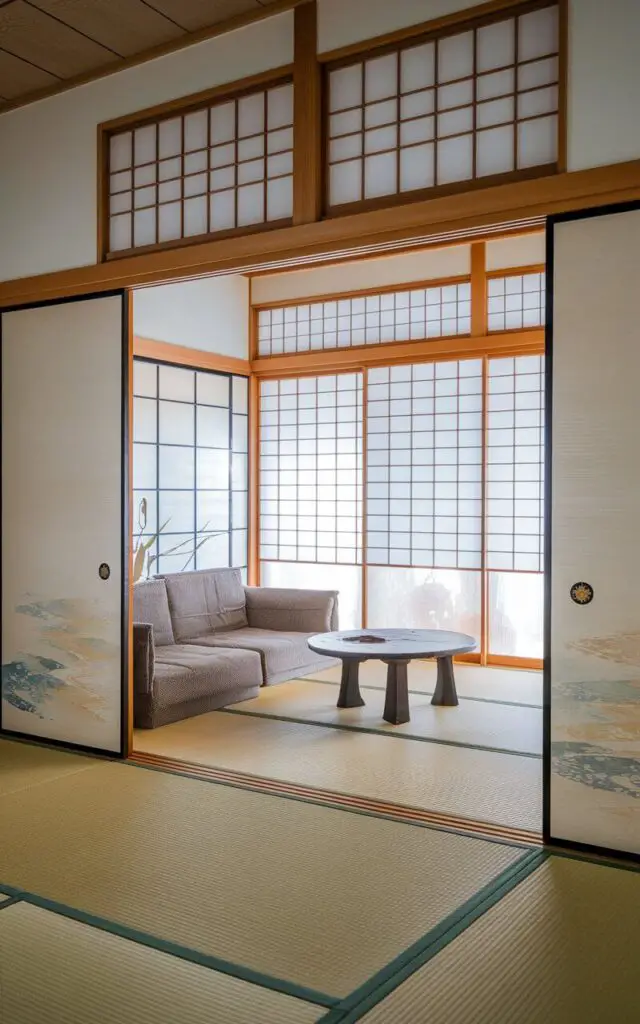
Sliding doors are the perfect way to divide a space while maintaining an open flow.
Fusuma (opaque sliding panels) or shoji-style doors help maintain the peaceful, spacious vibe of a Japanese home, offering privacy without the bulk of traditional doors.
They’re a chic, functional addition.
20. Layer With Neutrals and Textures
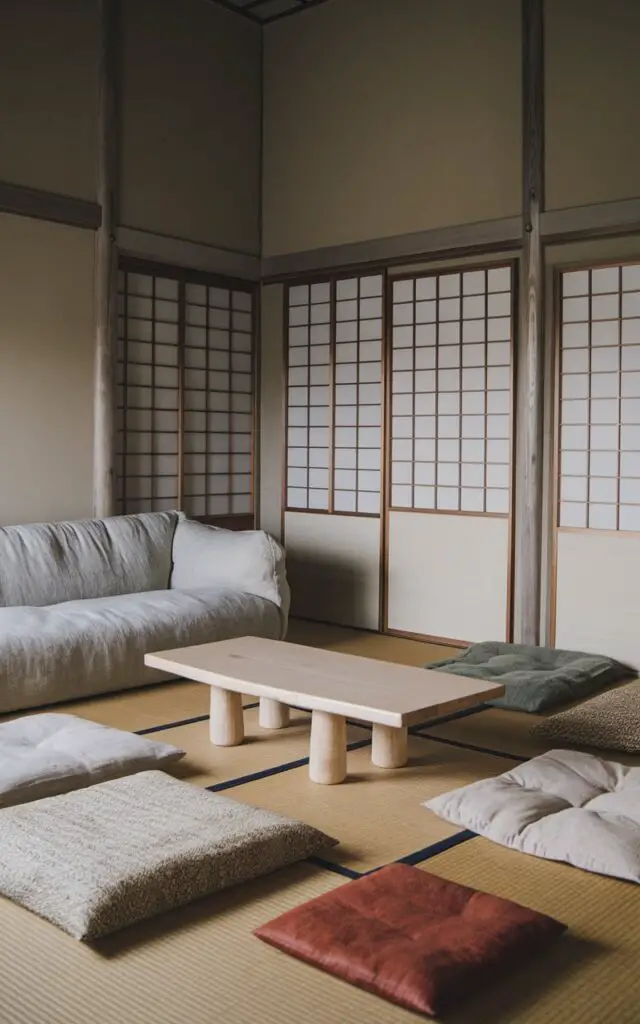
Japanese interiors thrive on textures more than patterns.
Keep your color palette muted, then layer different materials—think soft linen cushions, wool throws, or a thick cotton rug.
This mix creates depth and warmth without disrupting the peaceful vibe of your living room.
21. Add a Bonsai Tree

A bonsai tree isn’t just a plant; it’s a statement of patience and care.
These miniature trees capture the essence of nature, and with their sculptural forms, they make the perfect focal point in a Japanese-style living room.
A bonsai is a living piece of art, constantly evolving.
22. Keep Decor Simple and Purposeful

Japanese interiors are about subtlety and intention.
Decor is chosen thoughtfully—not just for aesthetic value, but for its meaning or function.
Whether it’s a single artwork or a delicate vase, make sure each piece has a purpose and brings a sense of peace and calm to the space.
23. Use a Raised Tatami Platform

For a truly authentic Japanese-inspired living room, consider building a raised tatami platform.
This traditional feature allows you to sit and relax on tatami mats, elevating the experience.
It creates a defined, cozy space and invites you to slow down, remove your shoes, and enjoy life from a different perspective.
24. Celebrate the Imperfect with Wabi-Sabi

Wabi-sabi is all about finding beauty in imperfection and transience.
Decor items with subtle cracks, aged wood, and uneven textures capture this philosophy.
It’s about celebrating flaws and embracing the natural aging process.
Whether it’s a weathered bowl or a worn wooden table, wabi-sabi gives your living room soul.
25. Keep It Quiet and Thoughtful

The Japanese aesthetic is deeply rooted in quietude—rooms that allow for reflection and peace. Keep your living room from feeling overly busy.
Curate your space so that each piece is thoughtfully chosen, the layout flows gently, and everything has room to breathe.
This isn’t just a room; it’s a retreat.
Wrap Up
Incorporating Japanese design into your living room creates a peaceful, stylish space.
By focusing on simplicity, natural materials, and thoughtful details, your home can feel more balanced and calm.
Embrace these ideas, and soon you’ll have a beautiful, relaxing living room to enjoy every day.
Happy decorating!
